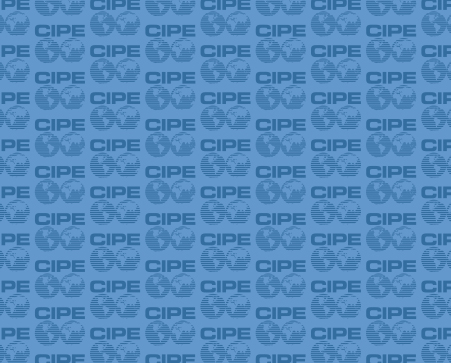
This article originally appeared on the TrustLaw blog.
Natural disasters affect millions of lives each year and bring humanity together around a common goal of helping the victims and supporting reconstruction. The Asian tsunami of 2004, the 2010 earthquake in Haiti, or the deadly foods in Pakistan later that year are just a few examples of tragic events that triggered the outpouring of donations to relief efforts. Yet, all too often this well-intended generosity fails to translate into commensurate results on the ground.
One reason is the sheer volume of aid that tends to overwhelm the absorptive capacity of governments, aid agencies, and non-governmental organizations (NGOs). Another key reason is corruption caused by the urgency to disburse aid that often leads to dangerous corner cutting when it comes to controls on spending and accountability.
The need to tackle corruption in disaster aid has been brought into focus again by the destruction wrecked by typhoon Haiyan, or Yolanda as it is known in the Philippines. In response, so far nearly 18 billion pesos ($414 million) in cash and relief goods have been pledged. The challenge of administering this magnitude of aid creates considerable corruption risks.
As Transparency International put it in its handbook of good practices on preventing corruption in humanitarian operations, published after the 2004 Asian tsunami, “That this occurs is hardly surprising: relief is delivered in challenging environments. The injection of large amounts of resources into poor economies, where institutions may have been damaged or destroyed, can exaggerate power imbalances and increase opportunities for corruption.”
President Benigno Aquino had made fighting corruption his priority long before the typhoon hit. To manage disaster aid, the government launched an online platform, Foreign Aid Transparency Hub (FAiTH), to track donations and provide status updates on relief and rehabilitation efforts. However, even the administration members recognize that there is still plenty of room for scammers and corrupt official to game the system. A recent statement from the Department of National Defensecautioned, “We would like to warn the public to be vigilant and not fall to this modus operandi by unscrupulous individuals.”
It doesn’t help that coordination between the national government and local government units (LGUs) in the Philippines is notoriously difficult. The local government code, passed in 1991, devolved significant powers to LGUs. In principle the devolution was supposed to make local authorities more responsive to needs on the ground but in practice it is often abused by officials who carve out corruption-prone spheres of nearly total control.
What is more, trust in public officials at all levels has been severely undermined by the ongoing pork barrel corruption scandal known as PDAF scam. The scandal implicates three sitting senators, five former congressmen and five ex-government agency chiefs in stealing public funds meant for local development projects by creating bogus non-governmental organizations through which significant amounts of money were defrauded.
“There’s an urgent call now for us to monitor the movement of foreign aid funds for Yolanda so they will go exactly where they’re supposed to: to the survivors of the typhoon,” said Undersecretary of Budget and Management and Chief Information Officer Richard Moya.
Fortunately, there are lessons learned that the Philippines can apply. In response to the 2004 tsunami, the Asian Development Bank (ADB)/Organisation for International Co-operation Development (OECD) Anti Corruption Initiative for Asia and the Pacific, along with Transparency International, convened an expert meeting in Jakarta that brought together government and civil society representatives from India, Indonesia, Malaysia, Maldives, Sri Lanka, and Thailand, as well as donors and NGOs. The experts identified six essential elements needed to curb corruption and reduce waste in disaster relief and reconstruction aid: country ownership; community-driven and participatory processes; transparency of aid flows; financial safeguards and administrative capacity; oversight, monitoring, and evaluation; and effective anti-corruption enforcement and complaint handling.
In addition to applying these principles, donors and recipient country governments should also consider ways to facilitate structured giving rather than one-off donations, when necessary decline donations, and take steps to improve the overall level of governance. A successful example of the latter in the Philippines has been the work of the Institute for Solidarity in Asia (ISA) based on its innovative Performance Governance System (PGS) meant to translate development goals into concrete strategies and to combat corruption in government. Since its inception in 2004, the PGS has helped national departments and local governments alike.
In the City of Iloilo, for instance, each department in all sectors developed a scorecard to measure targets and monitor progress toward specific, measurable goals. The city also formed the technical working group dedicated to the PGS that assisted these departments in implementing their scorecards. As a result, local income increased from 825 million pesos to over one billion pesos three years after the city’s 2005 entry into the PGS program. In a striking example of improved coordination, Iloilo – despite being in Yolanda’s path – experienced no typhoon-related casualties thanks to the efforts of the local disaster risk reduction management council, the Iloilo City Immediate Response team, and well-managed volunteers.
Corruption in disaster response can be a taboo subject because it exposes the ugly underbelly of ostensibly noble efforts. Yet, there are constructive steps that the Philippines and all other countries can take to mitigate corruption risks through putting appropriate policies and procedures in place, and through improving national and local governance.
Anna Nadgrodkiewicz is Director of Multiregional Programs at CIPE.
Published Date: December 09, 2013
